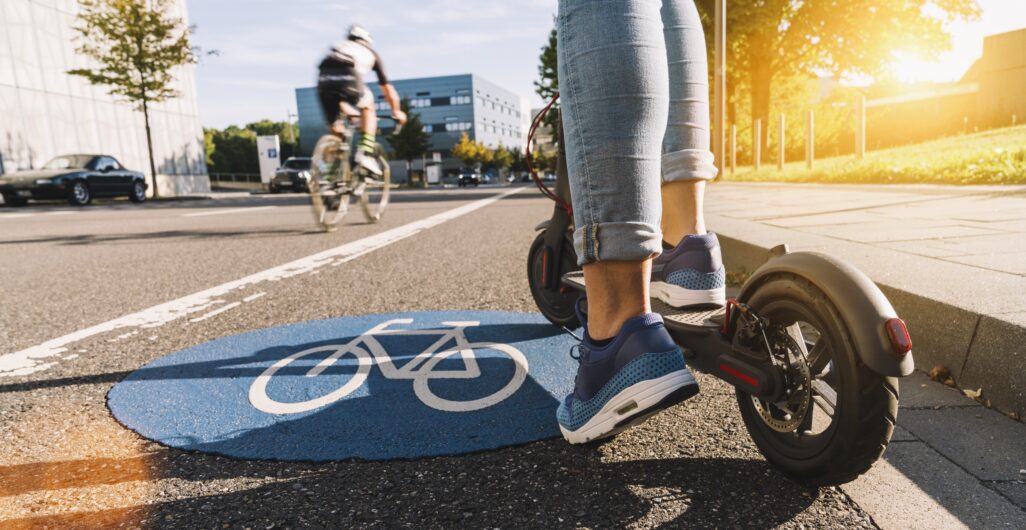The emblem of urban traffic: congestion, searching for a parking space, and stress. With an e-bike, on the other hand, everyday journeys can be undertaken quickly and easily. What’s more, cycling is not only fun – it also keeps you in shape! And riding your own e-scooter is growing in popularity and an interesting supplement to using public transport. klimaaktiv Haushalte gives you an idea of what to look out for when purchasing both vehicles.
Advantages of your own e-scooter
E-scooters are scooters but with road approval. Purchasing your own e-scooter has a number of advantages over borrowing one. For example, there is no time-consuming search for the nearest available vehicle, there are no unpleasant surprises regarding the condition of the scooter, and you need not worry about complying with hygiene regulations. Most e-scooters can be folded and easily transported as hand luggage on public transport. So at the stop, you get out, simply unfold the scooter and continue the journey to your destination. Compared to a rental scooter, a personal scooter is also much more environmentally friendly. Its lifespan is naturally longer than that of a rental scooter, which is used by a diverse range of people and often not treated with much care. At home or in the office, the e-scooter is easily charged at an outlet for your next trip.
Purchasing your own electric scooter can pay for itself in little time. Prices range from just under EUR 300 to EUR 1000, with significant differences in performance and range. The e-scooter-list on topprodukte.at provides a comprehensive overview of the most energy-efficient scooters along with technical data and valuable tips for their use.
Advantages of an e-bike
Not convinced by the e-scooter? Perhaps an e-bike is a suitable alternative. Those who use one can leave everyday stress behind while simultaneously doing something for their health. As a study by the Institute of Transport Economics in Norway shows, bicycle use increases from an average of 2.1 km to 9.2 km per day when electric bicycles are purchased. So it’s clear that e-bikes offer enormous potential for your day-to-day exercise!
For those who don’t want to miss out on using public transport also when travelling by bike, we recommend a modern folding e-bike. This is just as easy to fold up as an e-scooter and weighs no more than a scooter with a heavy battery. In terms of price, such a bike is scarcely different an e-scooter. It is also possible to apply for a subsidy. Folding bikes with or without an electric engine are eligible for a subsidy of EUR 600 for the first time this year, EUR 450 of which is provided by the Ministry of Climate Action and EUR 150 by sports retailers. This also includes a comprehensive bike service. A mobility bonus EUR 1,000 is also available for the purchase of a transport bike with or without an electric engine. The respective subsidy can be applied for at umweltfoerderung.at. The prerequisite for private individuals is possession of an annual public transport pass. The dimensions of the folding bike must also be considered when making a purchase. They must not exceed the dimensions 110 x 80 x 40 cm in order to be accepted as luggage on all ÖBB local trains and Railjets. This means that the folding bike can be taken on the train free of charge. Further information about taking bikes on public transport can be found here.
Whether e-scooter or e-bike, no matter your choice, both vehicles are much more sustainable to use than a car or motorbike.










